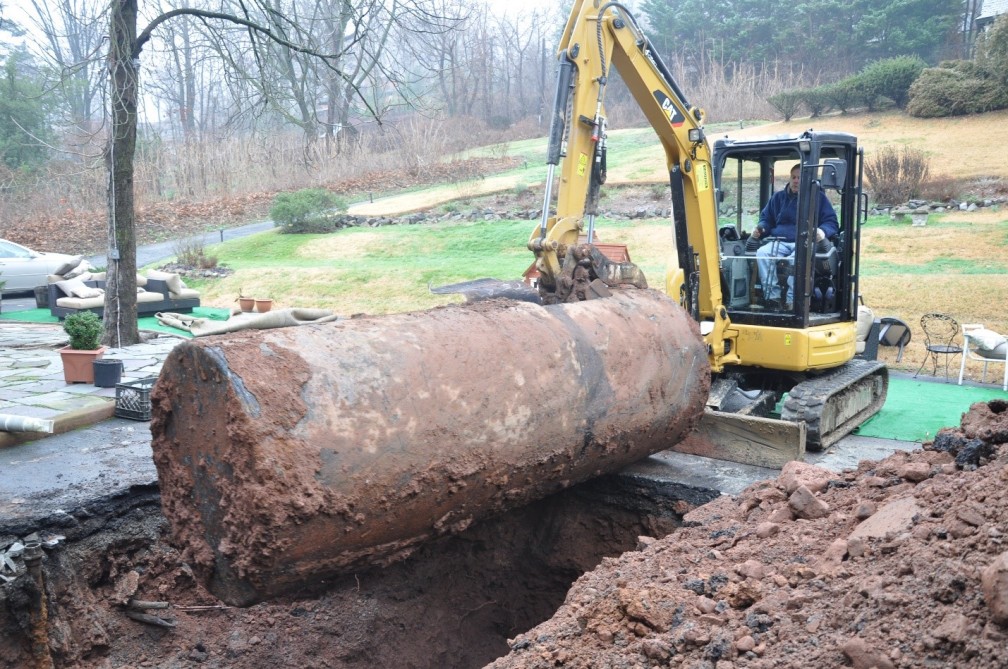
According to the New Jersey Fuel Merchants Association there are over 100,000 buried oil tanks in New Jersey. In my real estate dealings, addressing an underground oil tank is common practice. The risk in buying a house with an underground oil tank is that it may have leaked. It is not that uncommon for older underground oil tanks to leak oil into the surrounding soil or in extreme cases the ground water. The party responsible for cleaning up a spill is the current home owner and most home owner’s insurance companies do not cover the clean-up. Even oil tank warranty companies such as Proguard have restrictions and coverage limits. That is why in representing buyers, I recommend that properties be checked for underground oil tanks and that the real estate contract stipulate that it is the seller’s responsibility to remove the underground oil tank. And as a seller, if you have an oil tank, it is best to pro-actively remove it before even listing your house so that it won’t become an issue in the real estate transaction.
The following is some frequently asked questions and answers that were provided by NorRoc Enterprises, one of the environmental companies I recommend to remove underground oil tanks. The picture above is actually the company removing a 1000 gallon oil tank from my property. They can be reached at 973-541-9559 or norroc@optonline.net.
What is involved with removing an underground oil tank?
The first step is a site visit. During this site visit, the representative will find the location and orientation of the oil tank and see if there is any fuel or water in the tank. The field rep will also check for equipment access. The next step is the permit process. NorRoc applies for all permits from the local municipality which has up to 21 days to process the permits. Once the permits are received, the process to remove the tank is only one day. In a few short hours, the tank will be exposed, cut open and cleaned and then removed from the ground. Once removed, the field crew waits for the arrival of the municipal inspector to approve the tank removal and excavation. Once cleared, the area is backfilled with certified clean / virgin quarry soil.
How much does it cost to remove an underground oil tank?
The cost associated with an oil tank removal can vary depending on size, accessibility and remaining oil in the tank. An average 550 gallon tank that is easily accessible and has no fuel remaining can cost approximately $1600 to remove without permits. For a 1000 gallon tank the cost would be approximately $1800. Towns can charge from $50-$279 for the permits and the cost is passed onto the customer. There is no charge from NorRoc for getting the permits.
What happens if the oil tank leaked?
If the tank shows signs of leakage, the NJDEP (New Jersey Department of Environmental Protection) is contacted and a case number is issued. Once the case number is issued, the NJDEP will require remediation be completed by a NJDEP certified contractor. This contractor manages the process and the approvals required by NJDEP. Remediation requires removal of all contaminated soil. Soil samples are taken from the excavation and incorporated into a report that is issued to the NJDEP for approval.
How much can the clean-up cost?
Clean-up can range from $10,000 to $200,000 depending on the amount of soil that needs to be removed, if there is groundwater contamination and what further measures need to be taken per NJDEP protocol.
How long does the clean-up take?
Depending on the extent of the contamination, the clean-up can take a few days up to a few months. If it is simply soil contamination, the field time can take 1-5 days with additional time for report writing, receipt of soil sample lab reports, disposal certificates etc. In the event ground water is contaminated, that would be a case by case basis as monitoring wells would have to be installed and possibly a water treatment system. This is an extensive process and it could take months to complete.
For more information go to www.urbansuburb.com




